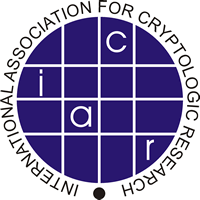 W
WThe American Cryptogram Association (ACA) is an American non-profit organization devoted to the hobby of cryptography, with an emphasis on types of codes, ciphers, and cryptograms that can be solved either with pencil and paper, or with computers, but not computer-only systems.
 W
WArlington Hall is a historic building in Arlington, Virginia, originally a girls' school and later the headquarters of the United States Army's Signal Intelligence Service (SIS) cryptography effort during World War II. The site presently houses the George P. Shultz National Foreign Affairs Training Center, and the Army National Guard's Herbert R. Temple, Jr. Readiness Center. It is located on Arlington Boulevard between S. Glebe Road and S. George Mason Drive.
 W
WThe Australian Cyber Security Centre (ACSC) is the Australian Government lead agency for cyber security. The ACSC is part of the Australian Signals Directorate and based at the Australian Security Intelligence Organisation headquarters in Building 14-16, Brindabella Business Park. The Centre is overseen by the Cyber Security Operations Board, and is the joint responsibility of the Minister for Defence.
 W
WAustralian Signals Directorate is the Australian government agency responsible for foreign signals intelligence, support to military operations, cyber warfare, and information security. ASD is part of the Australian Intelligence Community. ASD's role within UKUSA Agreement is to monitor SIGINT in South and East Asia. The ASD also houses the Australian Cyber Security Centre.
 W
WBletchley Park is an English country house and estate in Bletchley, Milton Keynes (Buckinghamshire) that became the principal centre of Allied code-breaking during the Second World War. The mansion was constructed during the years following 1883 for the financier and politician Sir Herbert Leon in the Victorian Gothic, Tudor, and Dutch Baroque styles, on the site of older buildings of the same name.
 W
WThe Communications Security Establishment, formerly called the Communications Security Establishment Canada (CSEC), is the Government of Canada's national cryptologic agency. It is responsible for foreign signals intelligence (SIGINT) and communications security (COMSEC), protecting federal government electronic information and communication networks, and is the technical authority for cyber security and information assurance.
 W
WThe Central Security Service (CSS) is an agency of the United States Department of Defense, which was established in 1972 to integrate the National Security Agency (NSA) and the Service Cryptologic Components (SCC) of the United States Armed Forces in the field of signals intelligence, cryptology, and information assurance at the tactical level. In 2002, the CSS had approximately 25,000 uniformed members. It is part of the United States Intelligence Community.
 W
WThe Communications and Information Services Corps (CIS) – formerly the Army Corps of Signals – is one of the combat support corps of the Irish Defence Forces, the military of Ireland. It is responsible for the installation, maintenance and operation of communications and information systems for the command, control and administration of the Defence Forces, and the facilitation of accurate, real-time sharing of intelligence between the Army, Naval Service and Air Corps branches at home and overseas.
 W
WCryptology Research Society of India (CRSI) is a non-profit scientific organization that supports research in cryptography and security related fields in India. The organization was founded in 2001.
 W
WFAPSI or Federal Agency of Government Communications and Information (FAGCI) was a Russian government agency, which was responsible for signal intelligence and security of governmental communications.
 W
WThe Far East Combined Bureau, an outstation of the British Government Code and Cypher School, was set up in Hong Kong in March 1935, to monitor Japanese, and also Chinese and Russian (Soviet) intelligence and radio traffic. Later it moved to Singapore, Colombo (Ceylon), Kilindini (Kenya), then returned to Colombo.
 W
WThe Finnish Defence Intelligence Agency is the combined signals (SIGINT), geospatial (GEOINT) and imagery intelligence (IMINT) agency of the Finnish Defence Forces. Operational since 2014, its responsibility is to support the defence of Finland through information gathering and analysis as an intelligence agency, organic to the Intelligence Division of Defence Command.
 W
WGovernment Communications Headquarters, commonly known as GCHQ, is an intelligence and security organisation responsible for providing signals intelligence (SIGINT) and information assurance (IA) to the government and armed forces of the United Kingdom. Based at "The Doughnut" in the suburbs of Cheltenham, GCHQ is the responsibility of the country's Secretary of State for Foreign and Commonwealth Affairs, but it is not a part of the Foreign Office and its Director ranks as a Permanent Secretary.
 W
WGCHQ Bude, also known as GCHQ Composite Signals Organisation Station Morwenstow, abbreviated to GCHQ CSO Morwenstow, is a UK Government satellite ground station and eavesdropping centre located on the north Cornwall coast at Cleave Camp, between the small villages of Morwenstow and Coombe. It is operated by the British signals intelligence service, officially known as the Government Communications Headquarters, commonly abbreviated GCHQ. It is located on part of the site of the former World War II airfield, RAF Cleave.
 W
WHer Majesty's Government Communications Centre (HMGCC) is an organisation which provides electronics and software to support the communication needs of the British Government. Based at Hanslope Park, near Milton Keynes in Buckinghamshire, it is closely linked with the Foreign, Commonwealth and Development Office and the British intelligence community.
 W
WBletchley Park is an English country house and estate in Bletchley, Milton Keynes (Buckinghamshire) that became the principal centre of Allied code-breaking during the Second World War. The mansion was constructed during the years following 1883 for the financier and politician Sir Herbert Leon in the Victorian Gothic, Tudor, and Dutch Baroque styles, on the site of older buildings of the same name.
 W
WHut 3 was a section of the Government Code and Cypher School (GC&CS) at Bletchley Park during World War II. It retained the name for its functions when it moved into Block D. It produced military intelligence codenamed ULTRA from the decrypts of Enigma, Tunny and multiple other sources. Hut 3 thus became an intelligence agency in its own right, providing information of great strategic value, but rarely of operational use. Group Captain Eric Malcolm Jones led this activity from 1943 and after the war became deputy director, and in 1952 director of GCHQ. In July 1945, General Dwight D. Eisenhower Supreme Commander of Allied forces wrote to Sir Stewart Menzies, Chief of the British Secret Intelligence Service (MI6) saying inter alia:"The intelligence that has emanated from you before and during this campaign has been of priceless value to me. It has simplified my task as commander enormously. It has saved thousands of British and American lives and, in no small way, has contributed to the speed with which the enemy was routed and eventually forced to surrender."
 W
WHut 4 was a wartime section of the Government Code and Cypher School (GC&CS) at Bletchley Park tasked with the translation, interpretation and distribution of Kriegsmarine messages deciphered by Hut 8. The messages were largely encrypted by Enigma machines. As the Kriegsmarine operated Enigma more securely, Hut 8 had less information for Ultra than Hut 6 which handled Army and Air Force messages. Hut 4 also broke various hand cyphers and some Italian naval traffic.
 W
WHut 6 was a wartime section of the Government Code and Cypher School (GC&CS) at Bletchley Park, Buckinghamshire, Britain, tasked with the solution of German Army and Air Force Enigma machine cyphers. Hut 8, by contrast, attacked Naval Enigma. Hut 6 was established at the initiative of Gordon Welchman, and was run initially by Welchman and fellow Cambridge mathematician John Jeffreys.
 W
WHut 8 was a section in the Government Code and Cypher School (GC&CS) at Bletchley Park tasked with solving German naval (Kriegsmarine) Enigma messages. The section was led initially by Alan Turing. He was succeeded in November 1942 by his deputy, Hugh Alexander. Patrick Mahon succeeded Alexander in September 1944.
 W
WBletchley Park is an English country house and estate in Bletchley, Milton Keynes (Buckinghamshire) that became the principal centre of Allied code-breaking during the Second World War. The mansion was constructed during the years following 1883 for the financier and politician Sir Herbert Leon in the Victorian Gothic, Tudor, and Dutch Baroque styles, on the site of older buildings of the same name.
 W
WBletchley Park is an English country house and estate in Bletchley, Milton Keynes (Buckinghamshire) that became the principal centre of Allied code-breaking during the Second World War. The mansion was constructed during the years following 1883 for the financier and politician Sir Herbert Leon in the Victorian Gothic, Tudor, and Dutch Baroque styles, on the site of older buildings of the same name.
 W
WThe International Association for Cryptologic Research (IACR) is a non-profit scientific organization that furthers research in cryptology and related fields. The IACR was organized at the initiative of David Chaum at the CRYPTO '82 conference.
 W
WThe Military Intelligence Service was a World War II U.S. military unit consisting of two branches, the Japanese American unit and the German-Austrian unit based at Camp Ritchie, best known as the "Ritchie Boys". The unit described here was primarily composed of Nisei who were trained as linguists. Graduates of the MIS language school (MISLS) were attached to other military units to provide translation, interpretation, and interrogation services.
 W
WThe National Cryptologic Museum (NCM) is an American museum of cryptologic history that is affiliated with the National Security Agency (NSA). The first public museum in the U.S. Intelligence Community, NCM is located in the former Colony Seven Motel, just two blocks from the NSA headquarters at Fort George G. Meade in Maryland. The motel was purchased, creating a buffer zone between the high security main buildings of the NSA and an adjacent highway. The museum opened to the public on December 16, 1993, and now hosts about 50,000 visitors annually from all over the world.
 W
WThe National Cyber Security Centre (NCSC) is a government computer security organisation in Ireland, an operational arm of the Department of the Environment, Climate and Communications. The NCSC was developed in 2013 and formally established by the Irish government in July 2015. It is responsible for Ireland's cyber security, with primary focus on securing government networks, protecting critical national infrastructure, and assisting businesses and citizens in protecting their own systems. The NCSC incorporates the Computer Security Incident Response Team (CSIRT-IE).
 W
WThe National Defence Radio Establishment is a Swedish government agency organised under the Ministry of Defence. The two main tasks of FRA are signals intelligence (SIGINT), and support to government authorities and state-owned companies regarding computer security.
 W
WThe United States National Vigilance Park (NVP) was a memorial to the military servicemen who participated in aerial reconnaissance during the Cold War. Dedicated on September 2, 1997, NVP was located just one block from the National Security Agency (NSA) headquarters at Fort George G. Meade, Maryland. It was previously open 24 hours a day for viewing. Military events connected with the Intelligence Community and/or personnel stationed at Ft. Meade or working at NSA were formerly scheduled through the National Cryptologic Museum (NCM), which is just one block west of the former park.
 W
WThe Radio Reconnaissance Platoon is a specially trained element of a United States Marine Corps Radio Battalion. A Radio Reconnaissance Team (RRT) was assigned as the tactical signals intelligence collection element for the Marine Corps Special Operations Command, Detachment One. Regular RRTs also participate in SOC operations during Marine Expeditionary Unit, or MEU(SOC), deployments.
 W
WRoom 40, also known as 40 O.B. was the cryptanalysis section of the British Admiralty during the First World War.
 W
WRSA Security LLC, formerly RSA Security, Inc. and doing business as RSA, is an American computer and network security company with a focus on encryption and encryption standards. RSA was named after the initials of its co-founders, Ron Rivest, Adi Shamir and Leonard Adleman, after whom the RSA public key cryptography algorithm was also named. Among its products is the SecurID authentication token. The BSAFE cryptography libraries were also initially owned by RSA. RSA is known for incorporating backdoors developed by the NSA in its products. It also organizes the annual RSA Conference, an information security conference.
 W
WSecure Communication based on Quantum Cryptography (SECOQC) is a project that aims to develop quantum cryptography. The European Union decided in 2004 to invest 11 million EUR in the project as a way of circumventing espionage attempts by ECHELON. Christian Monyk, the coordinator of SECOQC, said people and organizations in Austria, Belgium, the United Kingdom, Canada, the Czech Republic, Denmark, France, Germany, Italy, Russia, Sweden, and Switzerland would participate in the project.
 W
WThe Special Communications and Information Service of the Federal Protective Service of the Russian Federation is a cryptologic intelligence agency of The Federal Protective Service of Russia responsible for the collection and analysis of foreign communications and foreign signals intelligence, as well as protecting Russian government communications and information systems, which involves information security and cryptanalysis/cryptography.